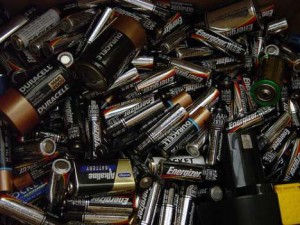
Batteries might consist of harmful metals and chemicals such as nickel cadmium, alkaline, mercury, lead and nickel-metal hydride, which can contaminate the environment if not disposed of properly. For example, when batteries containing cadmium is utilized in landfills, they will ultimately dissolve and release the toxic substance that might enter the water, posing substantial risks to the nicely becoming of the population. This is why recycling batteries has turn out to be so essential because it helps prevent pollution and conserve resources.
Multi-use process:
First, the batteries are sorted according to the chemical, such as nickel-cadmium, nickel metal hydride, lithium, alkaline, etc. combustible supplies such as plastics and insulation, eliminate the gas, oxidation heat, which is the initial step in the recycling process. Most recycling plants have scrubbers where the heat of the oxidizing gas is neutralized to eliminate impurities to create clean, naked cells that consist of precious metal content.
The batteries are then heated to melt the metal, because they are broken into pieces. Black slag left blown non-metallic substances are scraped arm slag, and numerous alloys, and to support the weight of the peel. Some of the liquid metal is poured directly from plants (£ 65) or “Home” (£ 2000) on the distinction, which is then transmitted to the recovery of metals to create nickel, chromium and iron re mix melted the production of other metal goods.
State and federal regulations in the U.S.:
Batteries containing mercury and Management Act was adopted in 1996, the U.S. Congress which demands regulated batteries such as Ni-Cd batteries and sealed lead acid battery:
1. easy to distinguish between consumer goods is simpler to return them for recycling
2. be labeled as the chemistry of the battery, the “3 arrows” symbol and the words that teaches users to properly recycle or dispose of batteries
3. unity of the collection storage and transportation
four. gradual introduction of specific mercury-containing batteries
Rechargeable Battery Recycling Corporation in the United States (RBRC) was established in 1994, nonprofit organizations, public sector organizations to support and promote the recycling of portable batteries such as nickel-cadmium (Ni- Cd), Nickel Metal Hydride (Ni-MH), Lithium Ion (Li-ion) and Lead a small stick. It also educates rechargeable power users, the usefulness and ease of recycling batteries.
Mercury reduction in batteries, which began in 1984 continues these days. Such as batteries, such as those containing alkaline have had about 97 percent mercury reduction, and new models might consist of about 1-tenth of the mercury regular alkaline battery, or payment in advance might be mercury Zero said. Mercury, heavy, zinc-carbon batteries are now available alternatives. Technologies such as silver-zinc and zinc-air button batteries consist of much less mercury, so they intend to replace the mercuric oxide battery. The nickel-cadmium batteries can be rebuilt at the rear and nickel cadmium and nickel-hydride system is also studied. At present, most nickel-cadmium batteries are permanently closed and the equipment, but the changes were created to the settings so enjoyable to watch and recycling of nickel cadmium batteries